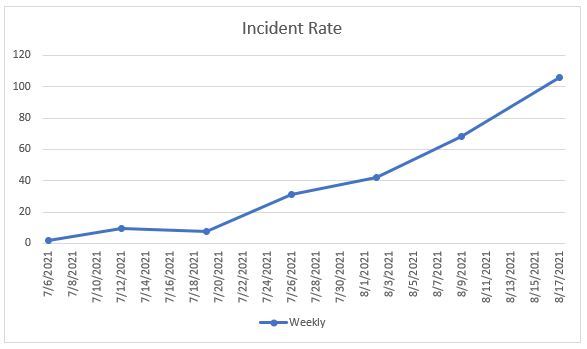This month, billions of the noisy, red-eyed bugs are burrowing up from underground lairs where they've laid in wait for 17 years. From North Carolina to New York state, millions of cicadas per acre will screech their mating calls at a volume that can rival a rock concert.
Western Kentucky and southern Illinois are not included in the footprint of "Brood II," as this year's swarm is labeled by entomologists. In fact, this area isn't a significant home to 17-year cicadas. Instead, our region's cicada broods come out every 13 years, but otherwise are nearly identical to their "older" cousins.
The most recent local cicada invasion occurred in 2011, when "Brood XIX" appeared. Also known as the Great Southern Brood, that swarm covered most of Illinois and Missouri, western Kentucky, middle Tennessee, and parts of all southern states except Florida. Those cicadas won't reappear until 2024.
Our next local invasion is anticipated in the spring of 2015, with the re-emergence of "Brood XXIII," or the Lower Mississippi Valley Brood. These bugs are at their thickest in western Kentucky and southern Illinois, as well as Indiana's Wabash River area. The rest of the brood extends southward along the Mississippi River into west Tennessee, Arkansas, Mississippi and Louisiana. (Links to brood maps are at the bottom of this article.)
A cicada's life is loud and hectic after all those silent years underground. Billions of the bugs dig out simultaneously, climb nearby tree trunks and shed their exoskeletons. They quickly grow to about an inch in length, including large wings that help them fly into the treetops and sing for a mate. It's the male cicada that does all the screeching, while the female barely clicks her wings.
The noise is over in a matter of weeks after most of the cicadas breed and die off, or get eaten by feasting birds and animals. Cicadas do not bite or harm people, but enough female cicadas cutting into branches to lay eggs can possibly damage or kill a tree.
Kentucky is also home to annual cicadas, those that come out every summer. But while the periodical 13- and 17-year species emerge in May, annual cicadas come out later in the summer. Annual cicadas are also known as "dog day" cicadas.
On the Net:
Cicada Brood mapsCicadas of Kentucky





